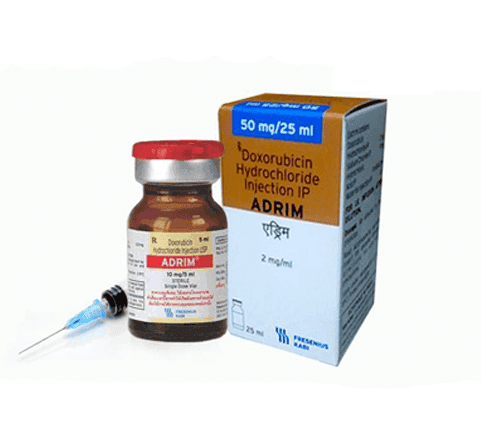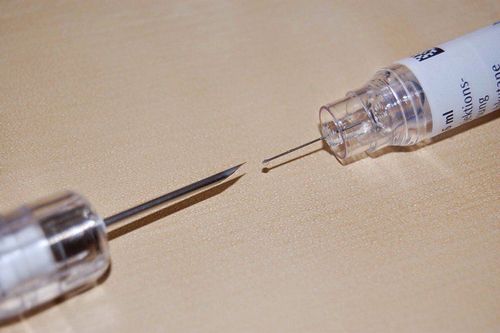This is an automatically translated article.
The article is written by doctors of Internal Oncology Department, Vinmec Times City International General Hospital.
Endometrial cancer originates in the cells that form the lining of the uterus. Most uterine cancers start out as endometrial cancers. In another type, uterine sarcoma, malignant tumors begin in the muscles and tissues of the uterus. Endometrial cancer and uterine sarcoma are treated differently. Endometrial cancer is the fourth most common cancer in women, most often in those over 55 years of age.
1. Endometrial cancer symptoms
Early signs It is necessary to recognize the early signs of endometrial cancer for effective treatment. Early signs include:
Vaginal bleeding between periods Periods are longer than usual Vaginal bleeding in postmenopausal women Abnormal vaginal discharge. If you notice any unusual vaginal discharge or irregular periods, see your doctor immediately.
Pain may occur in the pelvic area or during sex (less common). Some women also experience pain when urinating or after urinating.
As the disease progresses, the patient may:
Feel a lump or heaviness in the pelvis Unexplained weight loss Fatigue Nausea Pain in certain parts of the body such as the legs, back and pelvis. Certain noncancerous conditions can also cause similar symptoms, such as fibroids, endometriosis, endometrial hyperplasia, or polyps in the lining of the uterus.
If any of the symptoms are due to the above conditions, then the cause is not uterine cancer.

Hình ảnh ung thư nội mạc tử cung
2. Causes of endometrial cancer
The cause of endometrial cancer has not been found.
Cancer occurs when the genetic makeup of a cell or group of cells changes. Cells begin to grow uncontrollably instead of programmed to die as usual.
2.1 Risk factors The direct cause of endometrial cancer is unknown, but several factors have been identified that increase the risk of the disease.
A major factor in endometrial cancer is increased exposure to high levels of estrogen.
Those at higher risk:
Never been pregnant Menstrual period before age 12 Menopause after age 55. Estrogen-only hormone replacement therapy (HRT) also contributes to endometrial cancer risk. This therapy is often used for women after a hysterectomy.
Polycystic ovary syndrome (PCOS) which can increase estrogen levels is also a risk factor.
Diabetes also increases the risk because estrogen levels tend to increase with insulin levels. Long-term high estrogen levels increase the chance of uterine cancer developing.
2.2 Other factors Endometrial hyperplasia, or abnormal growth or thickening of the uterine lining Obesity High blood pressure Tamoxifen use to treat breast cancer Radiation therapy to the pelvis Family history family with uterine cancer A history of ovarian or breast cancer Several reports have found an association between acrylamide, a cancer-causing compound found in high-fat, high-carbohydrate foods, with endometrial and ovarian cancers in postmenopausal women.
However, studies are still contesting this.

Những người mãn kinh sau 55 tuổi có nguy cơ bị ung thư nội mạc tử cung cao hơn bình thường
3. Diagnosis of endometrial cancer
To diagnose this type of cancer, your doctor will look at your symptoms, as well as your medical and family history. They will also perform a pelvic exam.
The doctor will examine the cervix, uterus, vagina and vulva to detect any lumps or changes in shape or size.
Transvaginal ultrasound (TVU) can determine the size and shape of the uterus as well as the texture and thickness of the endometrium to rule out other conditions. A transducer is inserted into the vagina and sound waves create an image of the uterus on a monitor.
Blood test to detect cancer cells.
Biopsy involves taking a sample of tissue or cells for microscopic examination. Colposcopy can also be done, by inserting a thin magnifying lens into the vagina and uterus, and using a biopsy tube to take cell samples.
Tests to detect the spread of endometrial cancer include Pap tests, lymph node biopsies, and imaging tests, such as X-rays, CT, PET, or MRI scans.
Stage of disease If cancer is found, the malignancy of the tumor will be assessed based on how fast the cells are dividing and how fast the cancer is likely to grow.
A highly malignant tumor has the ability to grow rapidly and metastasize to other parts of the body.
Treatment depends on the stage, or how far the cancer has spread.
Stages:
Stage 0: The cancer cells are still where they started, on the surface of the inner lining of the uterus. Stage 1: Cancer has spread through the endometrium to the muscle of the uterus. Stage 2: The tumor has spread to the cervix. Stage 3: The tumor has spread through the uterus to nearby tissues, including the vagina or lymph nodes. Stage 4: Cancer has spread to the bladder or intestines, and possibly to other areas such as the bones, liver, or lungs. When endometrial cancer spreads from the endometrium to other parts of the body, for example when a new tumor forms in the lung, the new tumor is not lung cancer but is called lung cancer. metastatic endometrial cancer.
4. Endometrial cancer treatment
Treatment depends on the age and health of the patient, the extent and stage of the tumor.
The doctor will discuss the options and possible side effects with the patient about to be treated.
Options include surgery, radiation, chemotherapy, and hormone therapy.
Surgery Surgical treatment for endometrial cancer is usually a hysterectomy, or removal of the uterus along with the fallopian tubes and ovaries. This usually takes only a few days in the hospital, but it takes 4 to 8 weeks for the patient to return to normal activities.
A woman who has not yet reached menopause will no longer menstruate after surgery and cannot conceive. You may still experience menopausal symptoms, such as hot flashes, night sweats, and vaginal dryness.
Radiation Therapy Radiation therapy uses strong beams to kill cancer cells, and destroy the cell's DNA nucleus so that they can no longer multiply.
External radiation therapy (EBRT), which uses a beam to target the pelvis and other areas with cancer. Treatment can be up to five times a week for several weeks. One lasts about 15 minutes.
Brachytherapy, also called internal radiation therapy, uses small devices containing radiation that are placed inside the vagina for a few minutes and then removed. This therapy is repeated two or more times over several weeks.
Neoadjuvant radiation therapy aims to shrink the tumor before surgery, making it easier to remove.
Adjuvant radiation therapy is also used after surgery to remove any remaining cancer cells. Side effects of radiation therapy include skin burns in the treatment area, hair loss, fatigue, fatigue, and diarrhea. After treatment, side effects usually go away.
Chemotherapy Chemotherapy uses drugs to kill cancer cells. Combined with radiation therapy, it can remove the rest of the tumor.
In advanced cancer, chemotherapy can slow disease progression and prolong survival.
Both radiation therapy and chemotherapy help relieve symptoms in patients with advanced cancer.
For endometrial cancer, chemotherapy is usually given intravenously according to treatment cycles. Then there will be a period of rest for the body to recover. This cycle is repeated several times, depending on the stage of the disease and the goals of treatment.
Possible side effects include decreased healthy blood cells, easy bruising, bleeding, anemia, fatigue, and increased risk of infection.
Chemotherapy can also cause hair loss and gastrointestinal problems, including nausea, diarrhea, and poor appetite. There may be sores on the lips and mouth.
These symptoms will disappear after treatment ends.
Less common effects include leg swelling, joint pain, body imbalance, difficulty hearing, skin rash, and numbness in hands and feet.
Hormone therapy Hormone therapy may be appropriate for patients with advanced endometrial cancer.
Women with very early cancer and low-grade melanoma who want to get pregnant can choose hormone therapy instead of surgery.
This is not a standard treatment and requires close monitoring. If the cancer is in complete remission after 6 months of hormone therapy, a woman will be encouraged to conceive and have a baby, followed by a hysterectomy to reduce the risk of the cancer coming back.
Hormone therapy for endometrial cancer involves giving progestin, to help shrink tumors and control symptoms, and reduce estrogen levels, making it harder for cancer cells to grow.
Side effects include weight gain, cramps and mild nausea.

Điều trị phụ thuộc vào độ tuổi và sức khỏe của bệnh nhân, mức độ và giai đoạn của khối u
5. Survival prognosis
The median 5-year survival rate for endometrial cancer is about 81.3%, according to the American Cancer Society, and 95.3% for those diagnosed at the earliest stages.
To reduce the risk, doctors recommend avoiding smoking, exercising regularly and following a healthy, balanced diet.
ThinPrep Pap is actually an improved Pap smear. With this screening method, the histopathology obtained from the endometrium is not smeared onto a slide for microscopy like a conventional smear, but is washed completely with a clear liquid. ThinPrep vials and then shipped to the laboratory for processing with the ThinPrep machine. At this point, the template is completed automatically.
Vinmec International General Hospital offers female customers the Package of Screening and early detection of gynecological diseases. ThinPrep Pap Test has changed the traditional Pap smear method, through membrane controlled cell transfer technology, increasing the sensitivity and specificity in detecting precancerous cells. , especially adenocarcinoma cells, a type of cancer cell that is difficult to detect.
Customers can directly go to Vinmec Health system nationwide to visit or contact the hotline here for support.
MORE:
Detect and screen for endometrial cancer Measures to treat endometrial cancer Endometrial cancer: Symptoms, causes and screening













